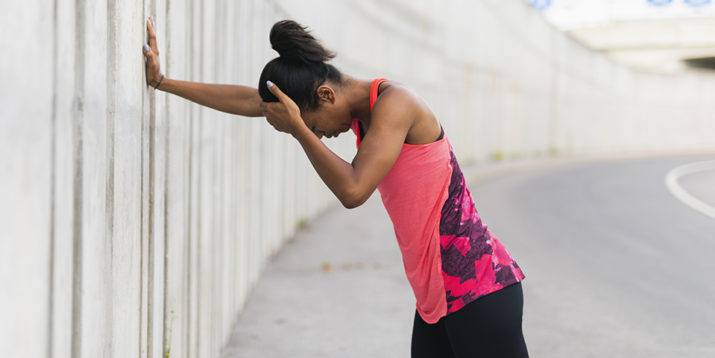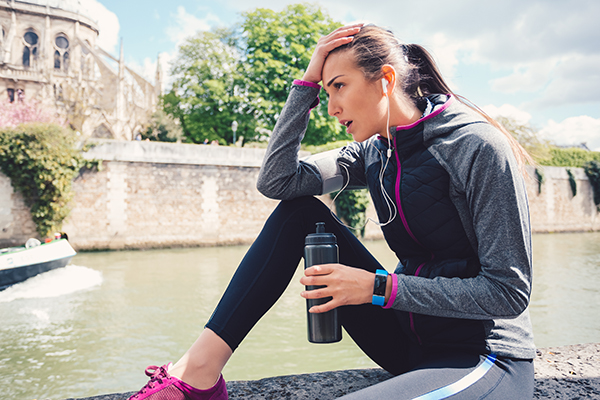Why Do I Get a Headache After Running?

Sensing the onset of a headache after running is the ultimate bummer.
You showed up and put in the work — you should be coasting on endorphins, not reaching into your medicine cabinet!
But while you rub your temples, focus on the good news: Much like how you can prevent most running injuries, it’s possible to avoid getting headaches after running.
Here are a few potential reasons you’re experiencing headaches after running and some recommendations for what to do differently.
1. Dehydration
If you tend to get a headache after running, your body may be lacking the fluid it needs to function properly, says Chrissy Carroll, M.P.H., R.D., a USAT Level I Triathlon Coach, author of Eat to Peak: Sports Nutrition for Runners and Triathletes.
“When you run, you lose fluid through sweat,” she explains. “During long runs and those in the heat, you sweat even more. If you’re not taking in fluid regularly, you might end up with a headache triggered by dehydration.”
It can be tricky to determine how much water you need to avoid a headache after running.
(Drink too much water before or during a workout and you could end up with cramps.)
However, with a little experimentation and a basic bathroom scale, you can land on a hydration plan that works for you, says Carroll.
“Try weighing yourself (sans clothes) before and after a long run,” she says. “If you notice that you’ve lost more than 3% of your body weight, it’s probably a sign that you should drink a bit more while running. On the flip side, if you’ve gained weight, you might be overdoing the hydration.”

2. Overheating
Think back to the last time you got a headache after running.
Was the weather hot and humid? Were you running on a treadmill in a stuffy, unventilated room?
If so, you may have elevated your body temperature, which can lead to headaches.
To avoid headaches after running due to overheating, plan outdoor runs during the coolest parts of the day — typically the early morning or after the sun sets.
Dress in light, breathable layers that you can remove midrun (e.g., a long-sleeve shirt you can tie around your waist).
If you run on a treadmill in a room with inadequate ventilation and climate control options, position a fan nearby and flip it on when you feel your body start to heat up.
3. An empty tank
Forgoing lunch for a midday run? The dedication is admirable, but the strategy is unsustainable.
Calories are energy, which you need to run. A headache after running could be a sign that your body’s fuel gauge is hovering just above that red “E.”
“Not fueling properly can sometimes be a source of headaches in some individuals,” Carroll says. “If you’re skimping on meals throughout the day and end up with post-run head pain, try eating a carb-rich snack (e.g., a piece of fruit or some whole-grain crackers) about an hour or two prior to your run to see if that helps.”
4. Primary exercise headaches
In some cases, a headache after running appears to correlate directly with the exercise itself.
“Primary exercise headaches don’t have any other underlying cause other than being brought on by physical activity,” Carroll explains.
According to the American Migraine Foundation, warming up before each run and following a training program that gradually intensifies over time (like 30 Day Breakaway) may help those who experience primary exercise headaches after running.
In some cases, medication or support from your doctor may be appropriate.
A physician can not only help you determine your best course of treatment, but they can also rule out more serious causes of headaches after running.
